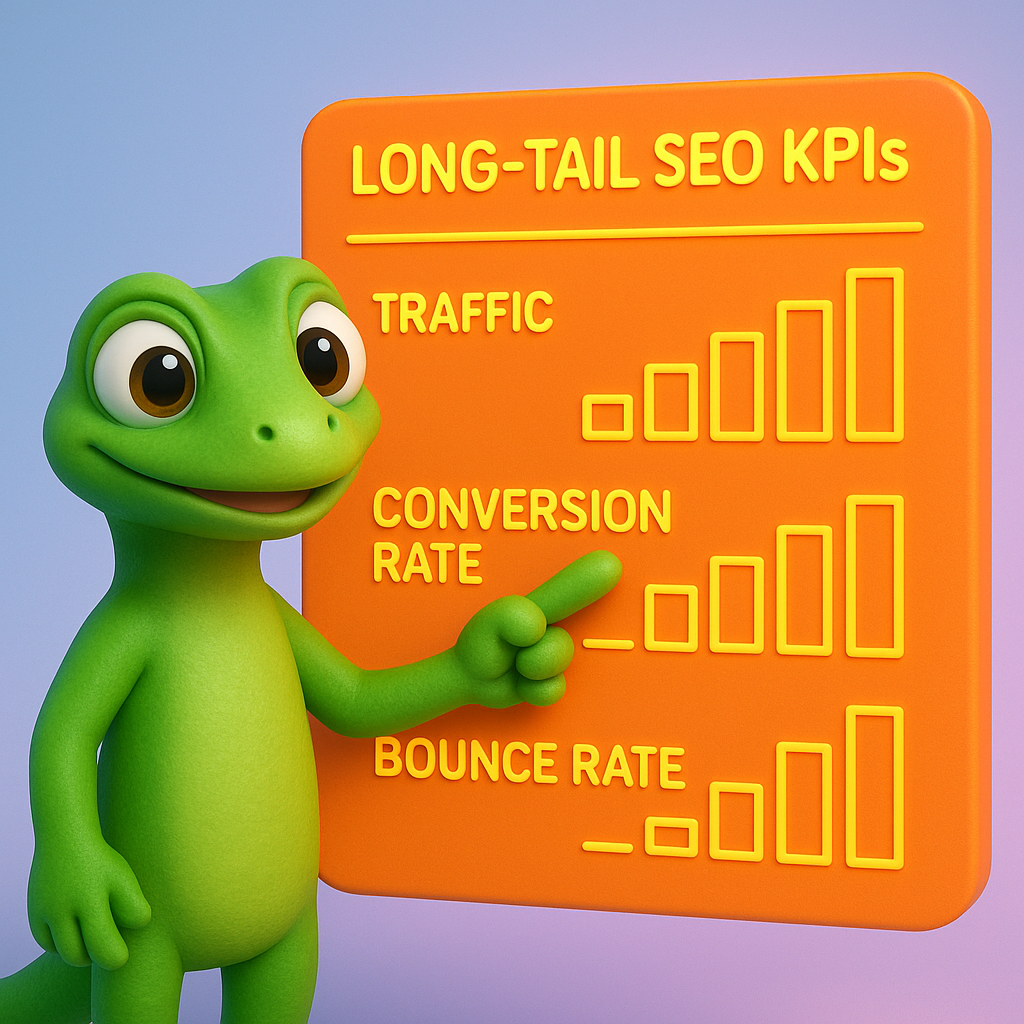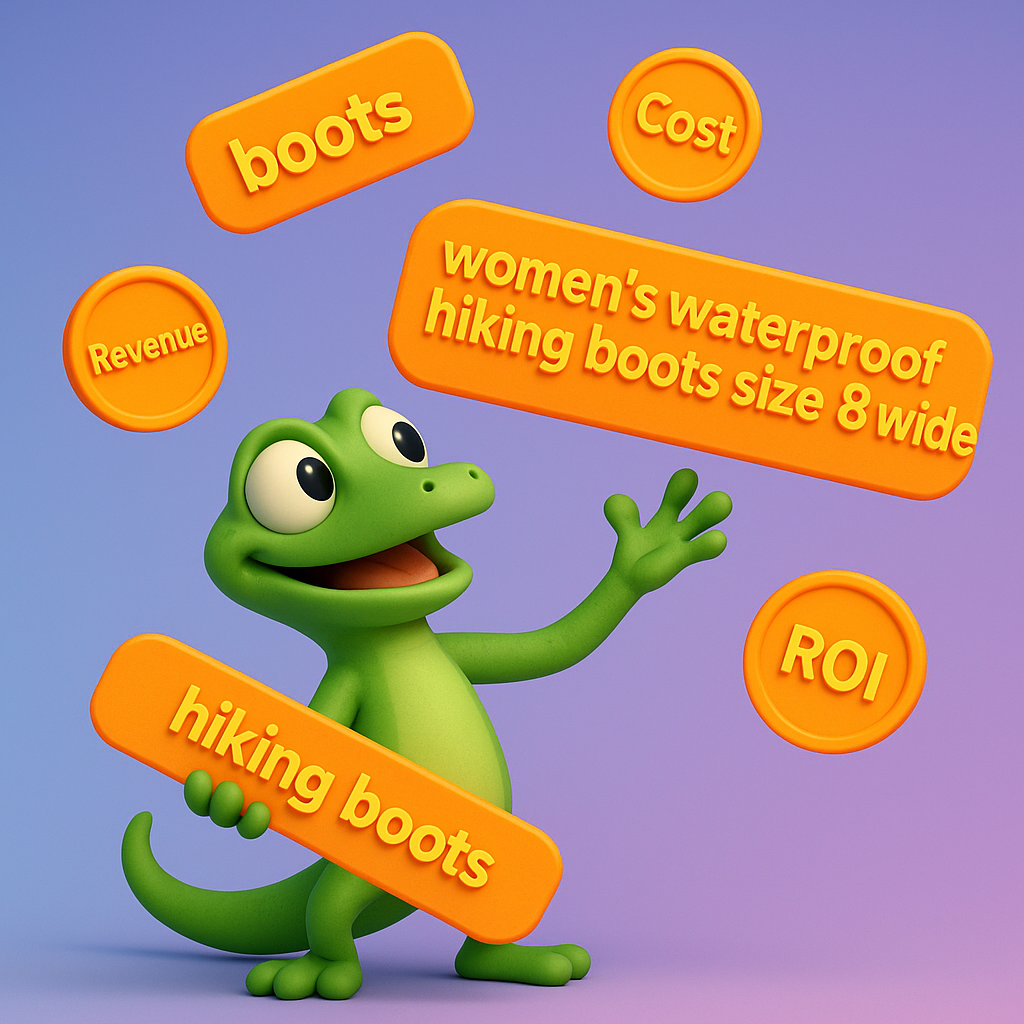Measuring the ROI of long-tail SEO campaigns: key metrics and methods
Long-tail SEO campaigns target specific, typically longer search queries that have lower search volume but higher conversion potential. For marketing leaders and SEO specialists looking to justify these campaigns, measuring ROI is essential—but requires different approaches than traditional SEO measurement.
Essential KPIs for long-tail SEO measurement
Traffic metrics
- Segmented organic traffic growth: Isolate traffic from queries with 3+ words using Google Analytics 4. Create segments specifically for long-tail landing pages to track their performance independently.
- SERP visibility: Focus particularly on long-tail keywords ranking in positions 4-10, as these represent quick-win opportunities for optimization.
- Click-through rate (CTR): Long-tail keywords typically have higher CTRs than head terms due to their specificity—monitor this differential using Google Search Console. This is particularly valuable as users searching with long-tail queries often have more specific intent, making them more likely to click when they find content that matches their detailed search.
Conversion metrics
- Conversion rates by keyword length: Long-tail traffic typically converts 2-5% higher than short-tail traffic (compared to 1-3% for generic terms). This difference stems from the heightened purchase intent—someone searching for “women’s waterproof hiking boots size 8 wide” is much closer to purchase than someone searching for “hiking boots.”
- Average order value (AOV): Long-tail traffic often generates 15-20% higher AOV due to specific purchase intent. This happens because users have already narrowed down their product requirements, reducing the comparison shopping that typically occurs with broader searches.
- Assisted conversions: Track how long-tail content supports conversions that happen later in the customer journey using multi-touch attribution. For example, a user might first discover your site through a long-tail informational query, return later via branded search, and finally convert—proper attribution ensures the long-tail content gets appropriate credit.
Engagement metrics
- Time on page: Compare engagement on long-tail landing pages versus short-tail pages. When content perfectly matches a specific query, users typically spend more time consuming the information.
- Bounce rate comparison: Long-tail pages should have lower bounce rates due to their higher relevance to specific queries. A well-optimized long-tail page answers the exact question the user had in mind.
- Page depth: How many additional pages do visitors from long-tail queries explore? This indicates whether your long-tail content successfully funnels users deeper into your site.

Tracking techniques for accurate measurement
Analytics configuration
- Custom dimensions in GA4: Tag and categorize traffic from long-tail keywords to isolate their impact. For example, create a custom dimension called “Keyword Length” with values like “1-2 words,” “3-4 words,” and “5+ words” to segment performance by query complexity.
- UTM parameter tagging: Append
utm_term=longtailto track campaign-specific performance. This is particularly useful when running targeted campaigns promoting specific long-tail content. - Custom dashboards and alerts: Create notification systems for significant traffic changes in long-tail segments. Set up alerts for when long-tail traffic drops by more than 10% week-over-week to catch potential issues early.
Specialized tools
- Rank tracking: Use tools like SE Ranking to monitor position changes for hundreds of long-tail terms simultaneously. These tools allow you to group keywords by theme, intent, or conversion value for more meaningful analysis.
- Visualization tools: Set up Data Studio dashboards specifically for long-tail performance reporting. Visualizations help stakeholders quickly understand performance trends across large keyword sets.
- Backlink analysis: Use tools like Screaming Frog or Moz to identify which long-tail content is earning natural backlinks. Long-tail content that attracts organic links is often addressing high-value topics for your audience.
ROI calculation approaches
Basic formula with long-tail adaptations
The fundamental ROI formula for long-tail SEO is:
ROI = ((Revenue from Long-Tail SEO - Costs) / Costs) × 100However, this requires accurate attribution of both revenue and costs to long-tail efforts specifically.

Revenue attribution methods
- Last-click attribution: Most common in eCommerce, but misses the role of long-tail content in the research phase. For example, a detailed product comparison article might significantly influence a purchase, but not get credit if the user returns later via a branded search.
- Multi-touch attribution: Essential for B2B with longer sales cycles—allocates credit across multiple touchpoints. This model recognizes that a prospect might first discover your site through a long-tail informational query, then return via several other channels before converting.
- CLV-based attribution: For subscription businesses, calculate based on:
This approach is particularly valuable for SaaS companies where the initial conversion value doesn’t reflect the true customer value.CLV = (Average Purchase Value) × (Number of Repeat Transactions) × (Average Customer Lifespan)
Cost tracking considerations
- Content creation costs: Specialized long-tail content often requires subject matter expertise. Track both external costs (freelancers, agencies) and internal resource allocation (content team hours).
- Tool expenses: Proportional costs of rank tracking and SEO auditing tools. For example, if 40% of your SEO strategy focuses on long-tail, allocate 40% of your tool costs accordingly.
- Labor allocation: Time spent on long-tail keyword research, optimization, and reporting. Set up time tracking categories specifically for long-tail initiatives to capture this accurately.
To simplify these calculations, consider using an SEO ROI calculator specifically designed to handle the complexities of long-tail campaign measurement.
Industry benchmarks and examples
By industry segment
| Industry | Long-tail conversion rate | ROI timeline | Traffic growth expectations |
|---|---|---|---|
| eCommerce | 2-5% | 6-12 months | 30-50% yearly |
| B2B | 1-2% | 9-15 months | 20-40% yearly |
| Healthcare | 3-4% | 4-8 months | 25-45% yearly |
| Local businesses | 3-5% | 3-6 months | 40-80% yearly |
The variation in these benchmarks reflects fundamental differences in customer decision processes—local businesses see faster results because the path from search to purchase is typically shorter, while B2B companies have longer sales cycles requiring multiple touchpoints.
Real-world example
A B2B SaaS company targeted long-tail keywords like “cloud-based project management tools for remote teams” rather than competing for “project management software.” Results:
- 40% increase in qualified leads
- 27% higher conversion rate compared to short-tail traffic
- 3x higher average deal size due to specificity of intent
The key to their success was developing content that deeply addressed the specific challenges of remote team management—not just generic project management features. By targeting long-tail queries that precisely matched their ideal customer profile’s needs, they attracted visitors with higher purchase intent and better product fit.
Challenges and mitigation strategies
Attribution complexity
Challenge: Long-tail campaigns often involve multiple touchpoints across channels. Mitigation: Use GA4’s assisted conversion reports and implement multi-touch attribution models. Create custom channel groupings that specifically track long-tail landing page entry points to measure their contribution throughout the customer journey.
Delayed ROI
Challenge: B2B campaigns especially may take 9+ months to show revenue impact. Mitigation: Focus on lead quality metrics (SQLs) as early indicators and track lifetime value (LTV). Develop a scoring system for leads originating from long-tail content to demonstrate quality improvements even before revenue materializes.
Content saturation
Challenge: Over-optimization for long-tail keywords can dilute rankings. Mitigation: Use a keyword clustering tool to group related terms into comprehensive topic hubs rather than creating separate content for each variant. This approach creates stronger topical authority and prevents keyword cannibalization.
Technical limitations
Challenge: Poor site speed or mobile optimization can negate content efforts. Mitigation: Conduct regular technical site audits alongside content creation. Prioritize Core Web Vitals improvements for your most valuable long-tail landing pages, as Google increasingly uses these metrics as ranking factors.
Advanced optimization strategies
Content clustering
Group related long-tail keywords into comprehensive topic clusters rather than creating thin content for each keyword variant. This approach typically yields better rankings across the entire topic.
For example, instead of creating separate pages for “best lightweight hiking shoes for women,” “women’s trail running shoes for hiking,” and “comfortable women’s hiking footwear,” develop a comprehensive guide that addresses all these variations while maintaining a clear topical focus. This strengthens your site’s authority on the broader topic while capturing numerous long-tail variations.
AI-assisted content optimization
Leverage AI writing tools specifically for long-tail content, where manually creating dozens of specialized pages may not be feasible. AI can help scale your content efforts by generating first drafts tailored to specific long-tail queries, which your subject matter experts can then refine.
This hybrid approach allows you to create high-quality, targeted content at scale—essential for capturing the “long tail” of potential queries in your market. The most effective strategy combines AI efficiency with human expertise for content that ranks well and converts.
Long-tail for featured snippets
Long-tail queries often trigger featured snippets—optimize content with concise, direct answers to these specific questions to capture position zero. Since long-tail queries are often question-based (“how do I fix a leaking garbage disposal?”), they present prime opportunities for featured snippet optimization.
Structure your content with clear headings that match common question formats, followed by concise answers (40-60 words) that directly address the query. This format increases your chances of earning the featured snippet position, dramatically improving visibility even when you’re not the #1 organic result.
TL;DR
Measuring ROI for long-tail SEO requires a specialized approach focusing on segmented traffic analytics, conversion tracking, and appropriate attribution models. The most effective methods combine traditional metrics (rankings, traffic) with business outcomes (conversions, revenue) while accounting for industry-specific benchmarks. While attribution remains challenging, tools like custom GA4 configurations and SEO reporting solutions can help marketing leaders accurately assess the substantial value that well-executed long-tail campaigns deliver—typically offering conversion rates 2-5% higher than short-tail keywords and significantly better ROI over time.
